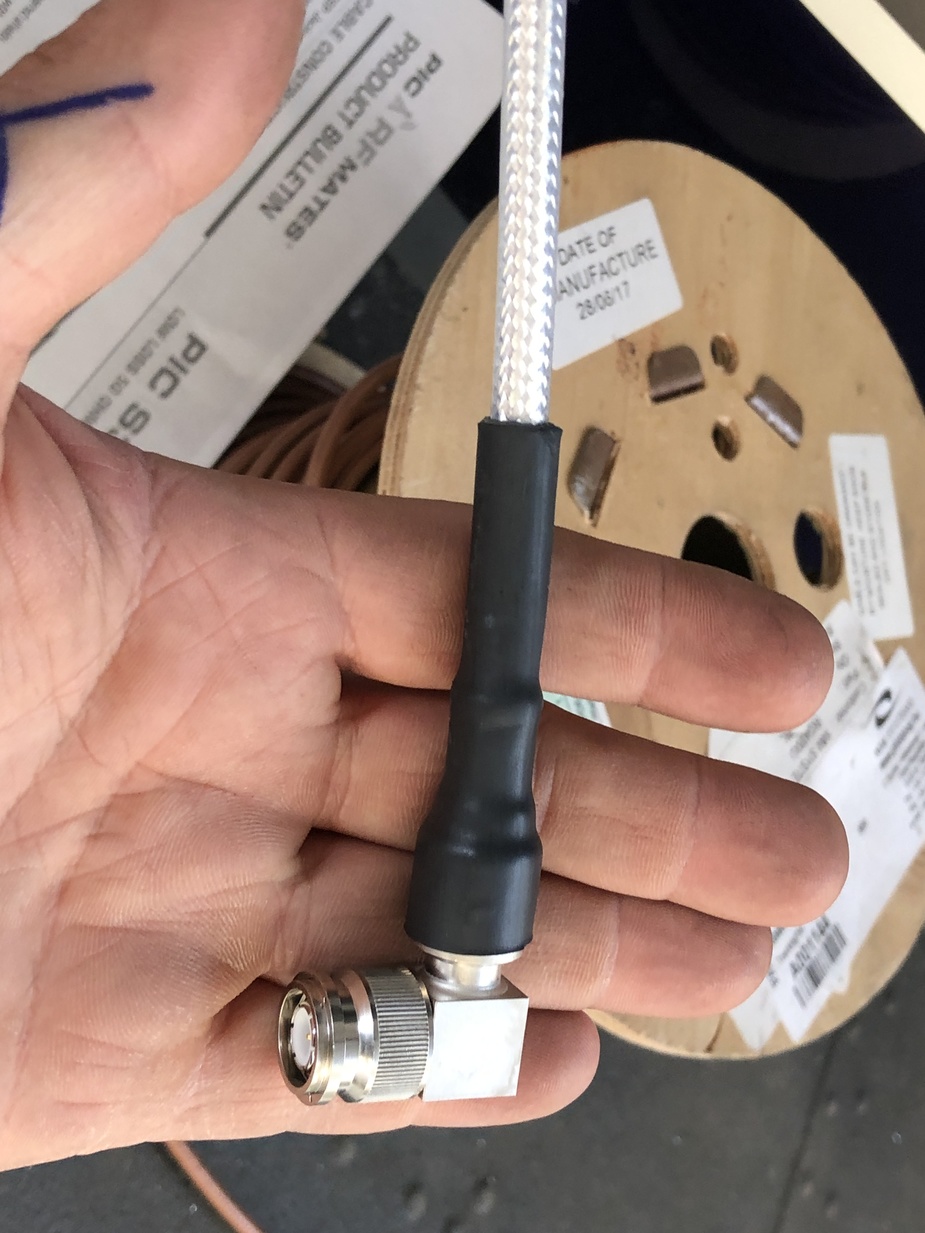I am trying to find some BNC and TNC connectors for the Picwire S33141 cable I need to install with my NY-164 traffic antenna. The part numbers listed by the producer are 190308, 19309, 190312 and 190313 for TNC and BNC straight and 90 degree connectors.
However I cannot find these anywhere online. I could fit a standard RG400 cable, however I’ve spent a lot for this low loss cable (arguably the best cable for aviation antennas) and I would hate to get back to a standard cable just because I wasn’t able to find the connectors…
If you know where can I find these or maybe if there are some compatible connectors from other producers, please let me know.

One can terminate most cables to most BNC/TNC connectors with careful soldering. It is the crimp or twist-on types which are critical.
The cable is here.

Assuming shields 2 and 4 are interconnected in the cable construction, you just need to solder to the outer shield, or the inner shield.
Thanks for the tip Peter, yes, one can use soldering, the issue is that the cable is very thick (almost 7mm in diameter) and even finding a connector that can accommodate the cable thickness is problematic.
I think someone in the forum used this cable for a Lynx NGT-9000 in his airplane, and said he had to order the connectors from US, but sadly I cannot remember who…
Edit: It was @Zsoszu, maybe he can give some insight.
I’ve just measured a common BNC plug and the hole is ~5.4mm

What diameter is your cable with the outside insulation stripped? With proper support (which it must have anyway) not having the outer sheath go into the connector is fine. Also there is a bit of metal left in that component so it could be drilled out in a lathe, to say 6mm.
I probably approach things is an unusual way  but I solder the shield to the inside end of this plug
but I solder the shield to the inside end of this plug

having stripped the inner just right, and then when the whole connector (right angle style is much better for this) is fully tightened up, I solder the inner conductor to the pin.
The connectors are available directly from PIC:
https://www.picwire.com/pic-cables/rf-mates/s33141/connector-list/
https://www.picwire.com/wp-content/uploads/files/pdfs/connectors/PIC_190313.pdf
I tried contacting them directly via the form on the above link you provided, but received no answer. Probably they only sell huge quantities and don’t bother for a few connectors…
The cable is too thick to be inserted inside the metal sleeve of usual crimp style connectors, I will try with solder types, as Peter suggested.
This is a dead easy soldering job. Just needs a bench and good soldering skills; you can’t do this lying on your back inside the plane 
There’s actually quite a lot of different 50-ohm RG-standards, with different outer diameters, and RS components likely sells BNC connectors in that size if you measure it and compare it to the datasheet of a connector that comes close.
It’s too late for you but in case anyone else is thinking of it – don’t bother with these exotic cables, they are absolutely not worth it for a light aircraft, either cost wise or the pain of getting the weird proprietary connectors for them. At VHF frequencies, the difference in attenuation between this proprietary cable type and RG400 won’t be noticeable on a typical GA cable run length. If it weren’t for the PVC jacket, RG58 would be entirely adequate in terms of RF performance.
You’re better off spending money and time on a decent antenna/antenna installation and good quality connectors, this will make a much bigger difference than getting 0.3dB less attenuation out of your cable compared to standard RG400. Even for GPS it’s not worth it – the difference between a run of RG400 and this stuff will only be on the order of 0.6dB, and your GPS antenna has an amplifier built in.
Let me find this out. If I remember well, I have imported from the US on one of trip to KORD. I talk to my avionics, possible he know, where did we order it…..
My connectors came with the cable, I mean from the same place.